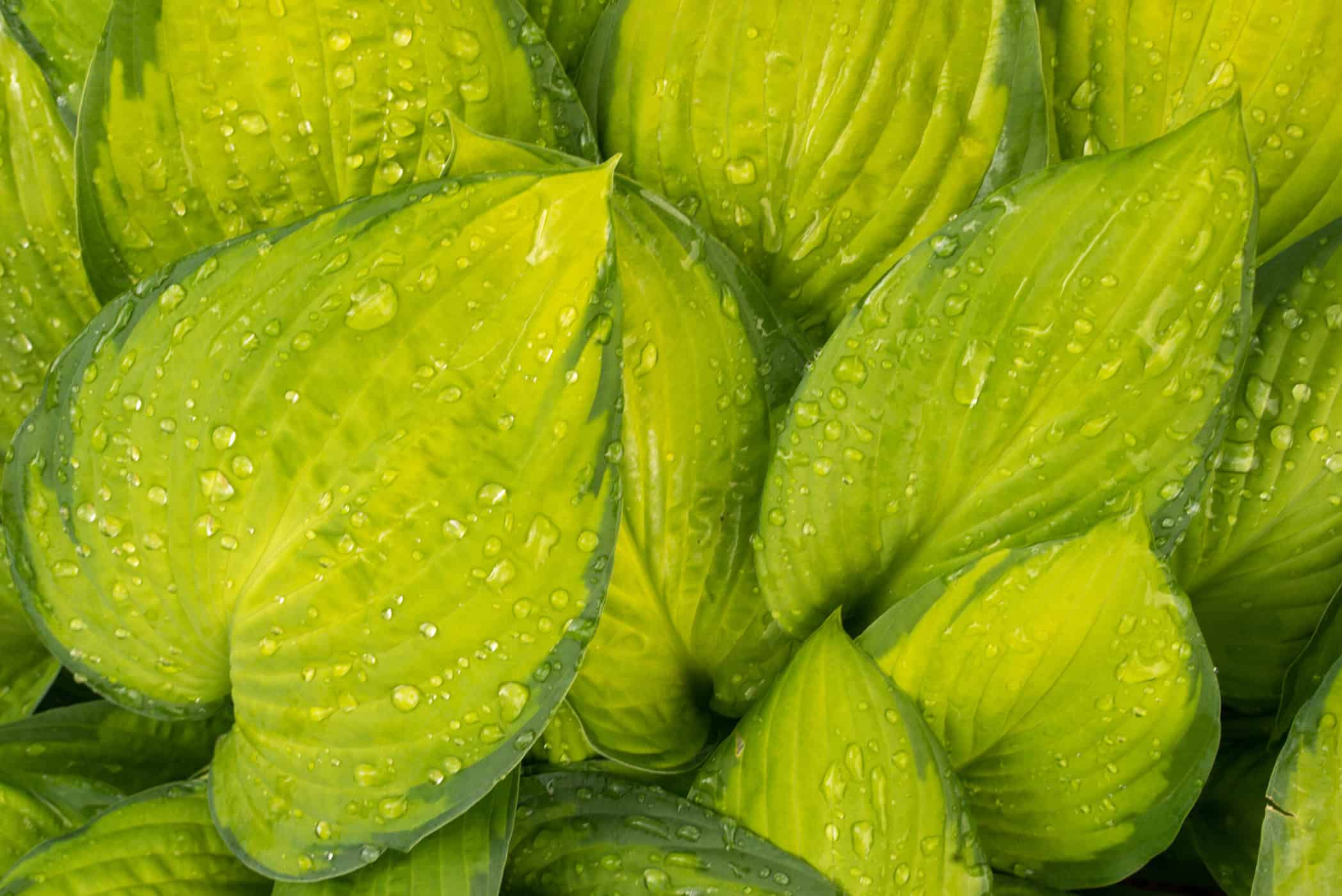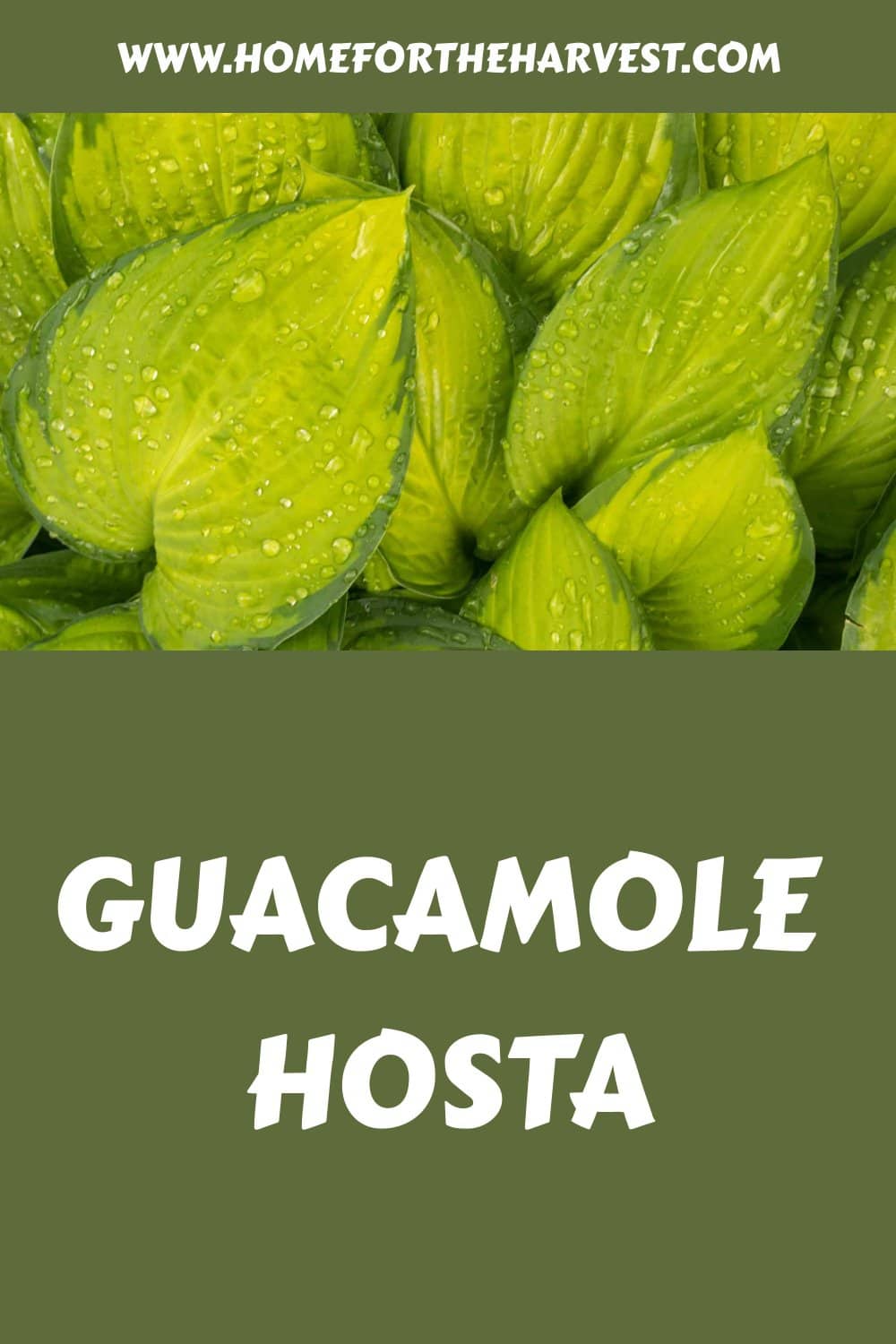The Guacamole Hosta is a large, variegated foliage hosta variety known for its bright yellow-chartreuse leaves edged in dark green. Bred in North Carolina, this cultivar develops its best color in warmer climates, especially when it receives a bit of morning sun. This fast-growing hosta is dependable and easy to grow in the perennial garden.
Guacamole hosta basics
Guacamole hosta is a large variety of hosta, typically growing about 4 feet wide and 2 feet tall. ‘Guacamole’ features lime green leaves with a dark green perimeter. This cultivar grows rapidly and can exceed its expected dimensions in good growing conditions.
This variety has big oval-shaped pointed leaves. The leaves typically are light green with a dark green edge and resemble an avocado. If the plant receives a lot of sunlight, the center of the leaf tends to become more golden in color. The dark green border can be less visible in cooler climates. Mature leaves are about a foot long and about 8″ wide at their widest point.
Guacamole hosta plants have tall, 3-foot tall flower stalks topped with pale purple flowers. Each small flower in the cluster is funnel-shaped, and they have a lovely floral scent.
The Guacamole hosta was developed by Bob Solberg of Green Hill Hostas in Franklinton, North Carolina, and introduced in 1994. ‘Guacamole’ was a sport of the popular ‘Fragrant Bouquet’ bred by Kevin Vaughn.
Guacamole Hosta has since become one of the most popular hosta varieties in North America. The variety was named 2002 Hosta of the Year by the American Hosta Growers Association. A decade later, the Guacamole Hosta received the prestigious RHS Award of Garden Merit in 2012.
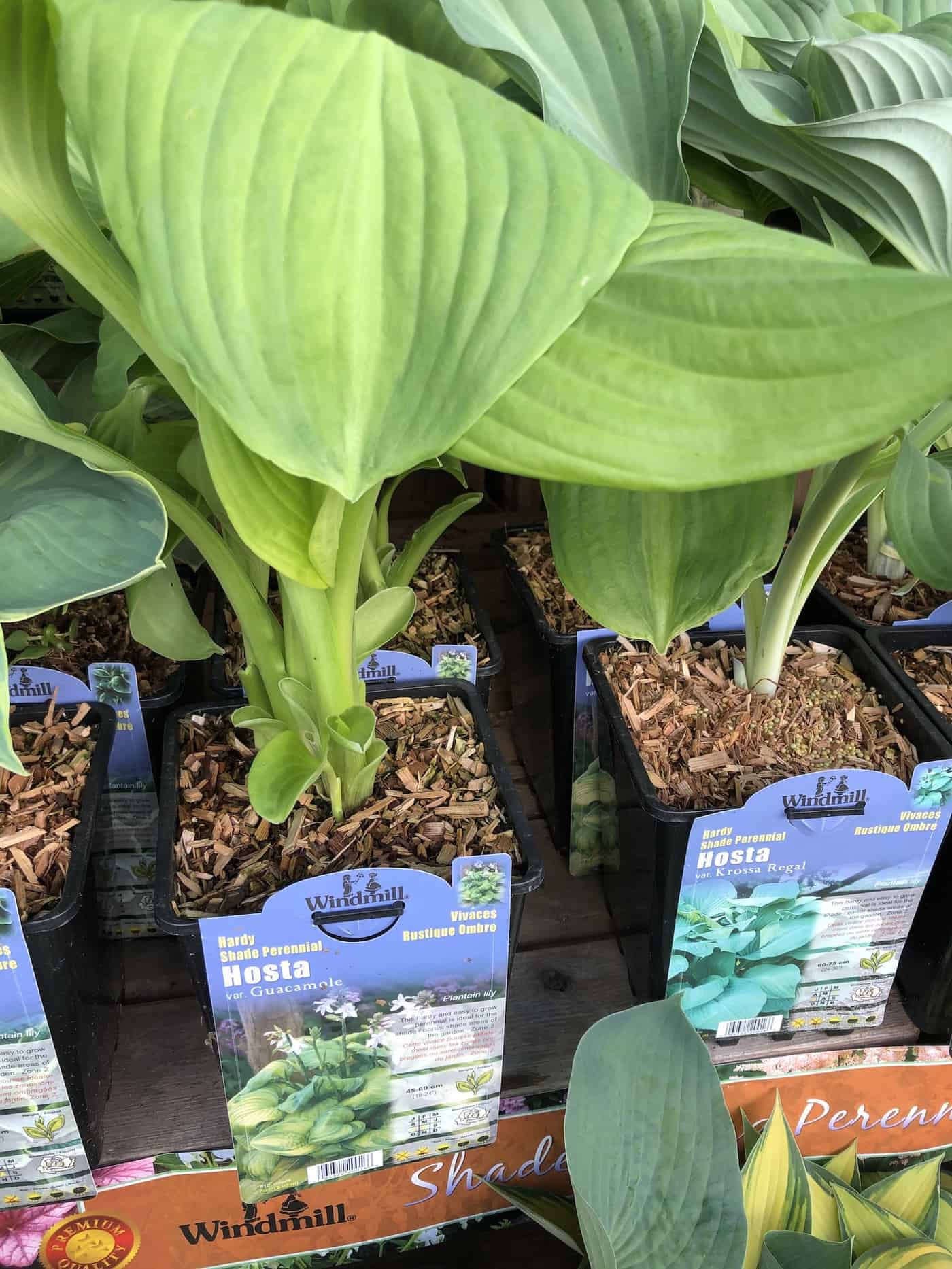
Planting Guacamole hostas
Guacamole hostas are generally sold as potted plants (as pictured above) or as dormant bare-root hosta plants. Potted plants are more convenient, but bare-root plants may be cheaper and more available (especially from specialty online-order nurseries).
Hostas grow best in nutrient-rich, slightly acidic fertile soil that is moist (not dry), but that drains excess water away easily. Typically, sandy loam soil enriched with organic compost is preferable. Hostas – even those with chartreuse leaves – grow best in sheltered locations, where the large leaves are protected from harsh afternoon sunlight, strong winds, and potentially damaging precipitation like hail.
The Guacamole hosta is well-known for its variegated foliage coloring, with a lime green center and dark green leaf edges. This leaf color is most pronounced when the Guacamole plant receives quite a bit of sunlight. While the plant should be protected from the harsh afternoon sun, the leaves grow surprisingly well in full sun during the mornings (and even in the afternoons in mild climates). Guacamole hostas can tolerate summer heat waves (even in the temperature range around 100°F (38°C), provided they have adequate water and shade.
Hostas are native to coastal Asia, where they grow in dense forest environments that receive significant rainfall. A good rule of thumb for watering hostas is to give them about 1” (25mm) of water each week. If the hostas receive this much rain that week, they likely don’t need to be watered, but any shortfall should be made up with supplemental watering. Try not to water the leaves; instead, apply the water directly to the soil overtop of the roots (drip irrigation works very well for hostas). Hostas should be watered in the morning if possible.
In the autumn, mature leaves of hostas are somewhat frost tolerant. Established Guacamole hosta plants can survive light frosts down to about 28°F (-2°C), but the leaves will be killed by a hard frost. Because pests love to overwinter in the big wet leaves, it usually makes sense to cut these plants back in the fall rather than waiting for spring. These hostas require several weeks of winter chilling below 40°F (4°C), in which the plants become dormant and rest before spring.
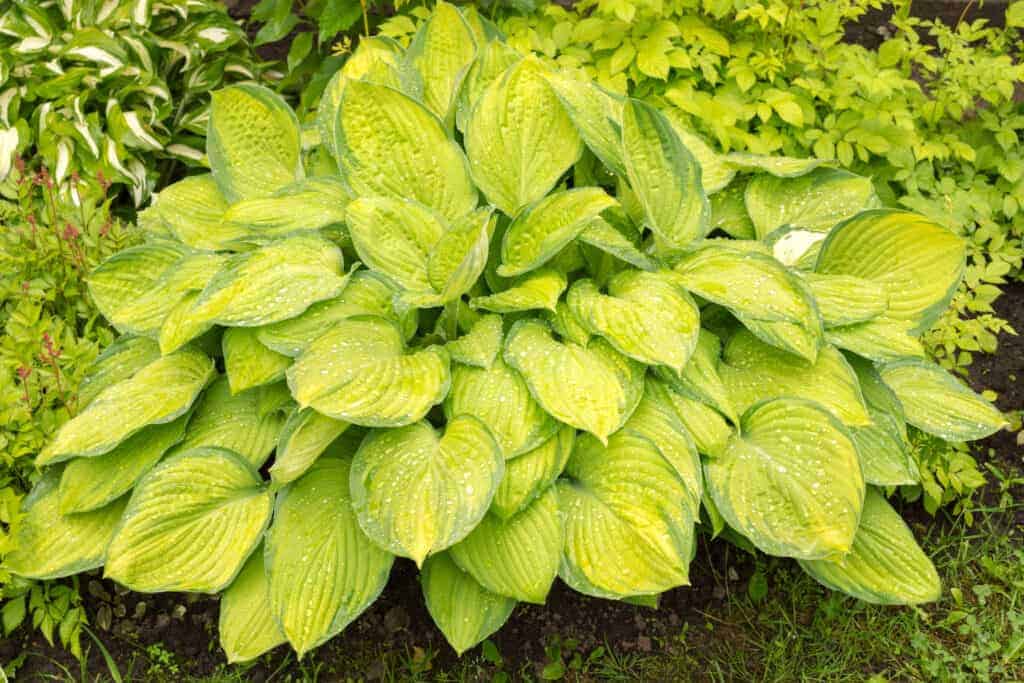
Caring for the Guacamole hosta
Caring for most hosta plants is very easy. Unlike your typical hosta, this type of hosta prefers a bit of sunlight, as long as it has enough water. Morning sun is optimal, as mid-day and afternoon sun can be quite harsh. If a tree, cloud, house, deck, or fence ends up blocking the sun for a couple of hours, your plant will still be just fine. Just make sure that your plant does not spend all day in the shade (for the best color).
When it comes to water, just make sure to water your Guacamole hosta regularly. Keep the soil damp, and do not overdo it. Avoid creating puddles of water that stand on top of the soil. Established hostas are surprisingly drought tolerant (but you’ll have to water them regularly for the first couple of years).
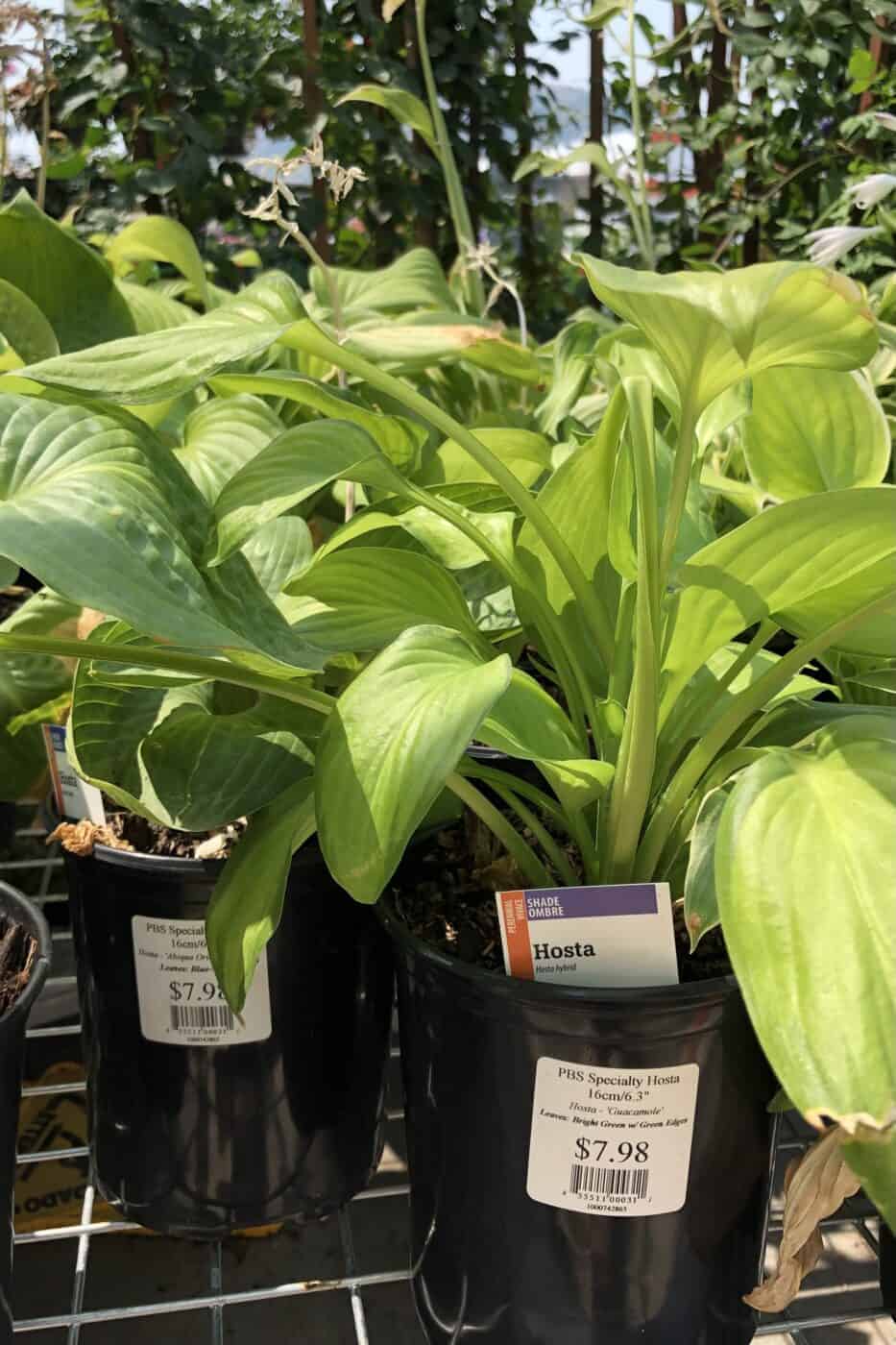
Dividing hostas
In some cases, you may need to divide up your Guacamole Hosta plant so it has enough room to grow. Dividing a plant means that you may separate a section of the plant to grow elsewhere to prevent crowding. It is similar to grafting.
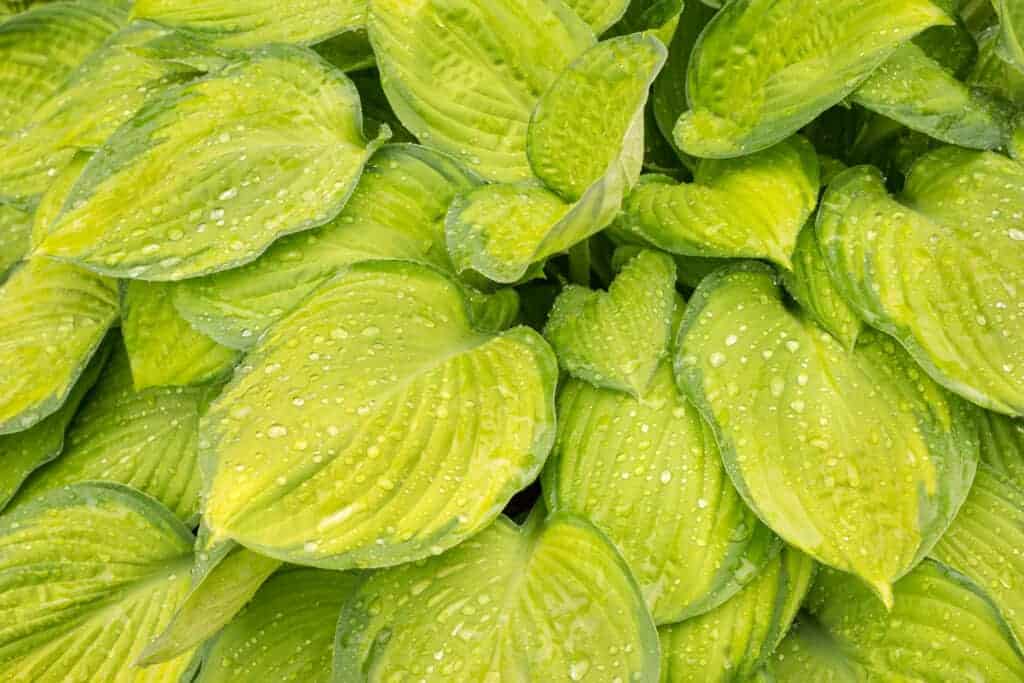
The best time to divide a Guacamole hosta plant is late spring or early summer. The leaves of the hosta will be curled up and will not have bloomed yet. Since hostas usually bloom in a thick clump, you will need to get a knife to divide it. Simply cut down the middle of the hosta plant to divide it (here are detailed instructions). Replant the root pieces and water deeply.


